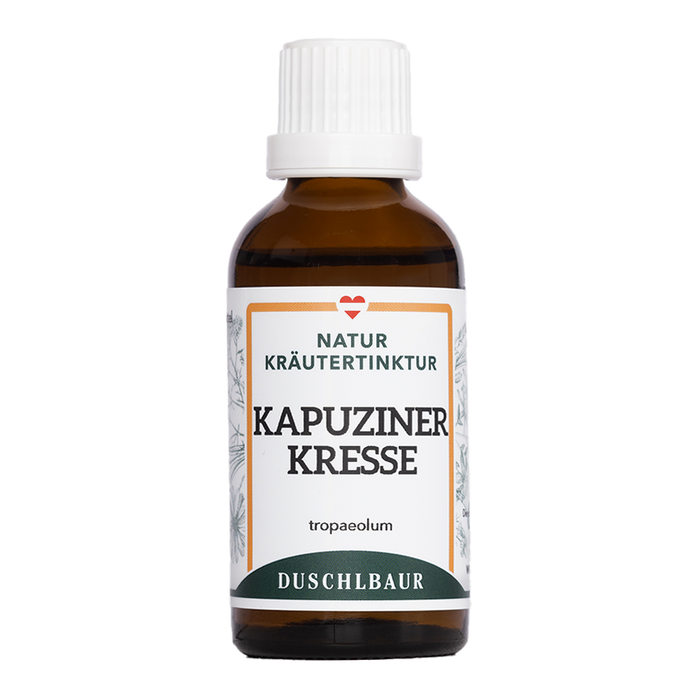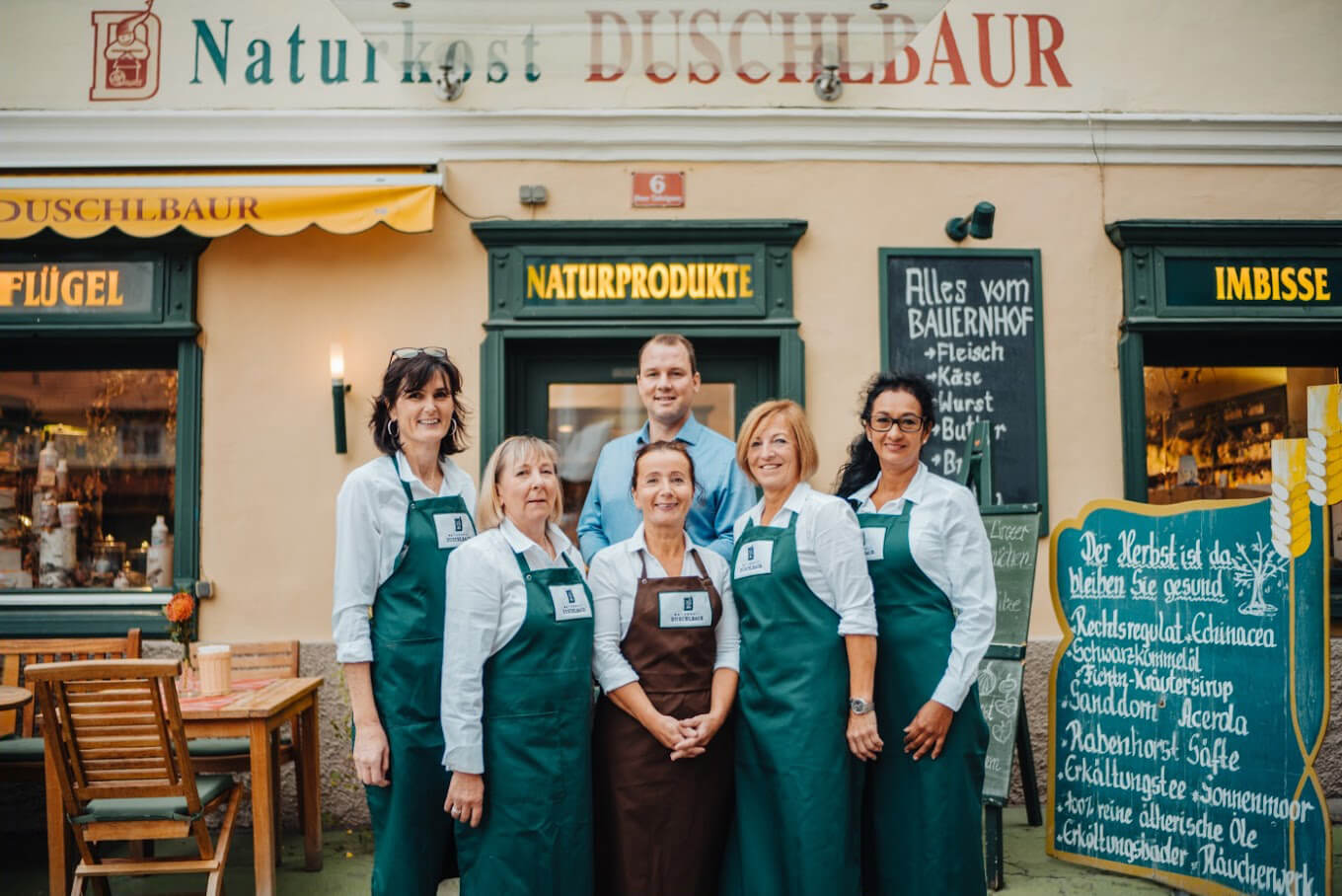The natural ingredients of theNasturtium tincture dropsare: water, alcohol, nasturtium.
To produce these very valuable drops we use the herb with flowers.
The shield-shaped leaves and the helmet-shaped flowers are reminiscent of a “sign of victory.”
Botanically speaking, nasturtiums belong to the family Nasturtiums, which consists of only a single genus. Nevertheless, up to 90 species are known today.
Tropaeolum majus can grow perennially under favorable conditions (frost and subzero temperatures are not beneficial). There are climbing nasturtiums that wind around trellises, fences, and trees, growing up to three meters in length, and bushy, low-growing nasturtiums that thrive just as luxuriantly. The round leaves of the nasturtium are about twice the size of their flowers. Water droplets bead up and roll off the leaf surface—like lotus flowers—and instantly wash away dust and dirt.
The characteristic yellow, orange, and red flower colors can be found in a single blossom. Viewed from the side, the flower, with its cap and spur, is reminiscent of the hoods worn by Capuchin monks. The word "Kresse" comes from Old High German and translates as "sharp" or "peppery." After flowering from late May to early October, the nasturtium forms hard capsules.
The flowers and leaves are edible. Their flavor is described as spicy and peppery. The pretty blossoms can be used to garnish many dishes. Nasturtiums only release their fragrance when the blossoms or leaves are cut. The aroma is perceived as "sharp green."







